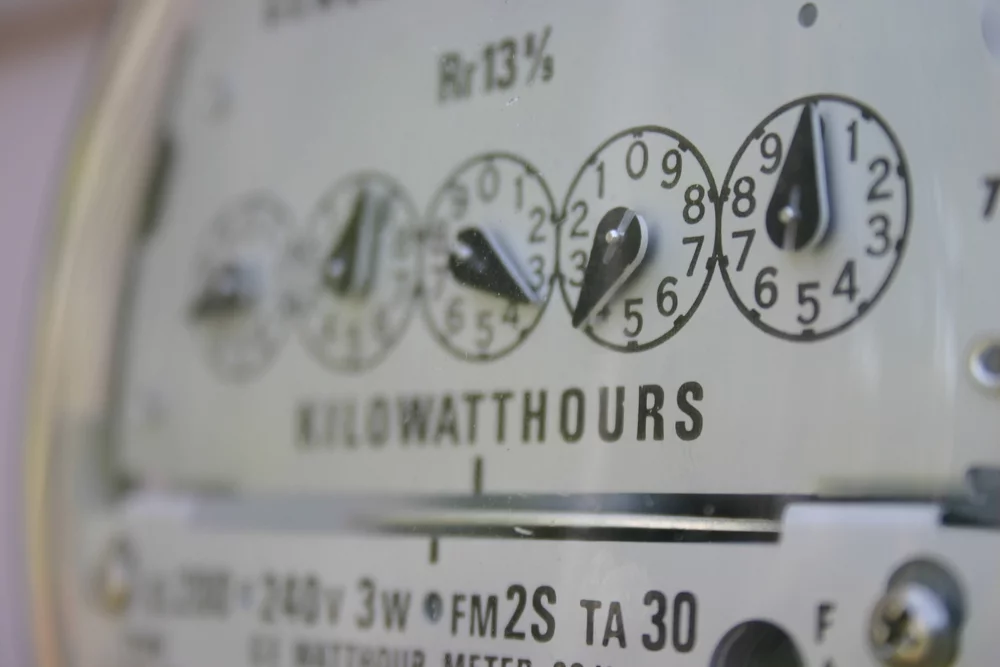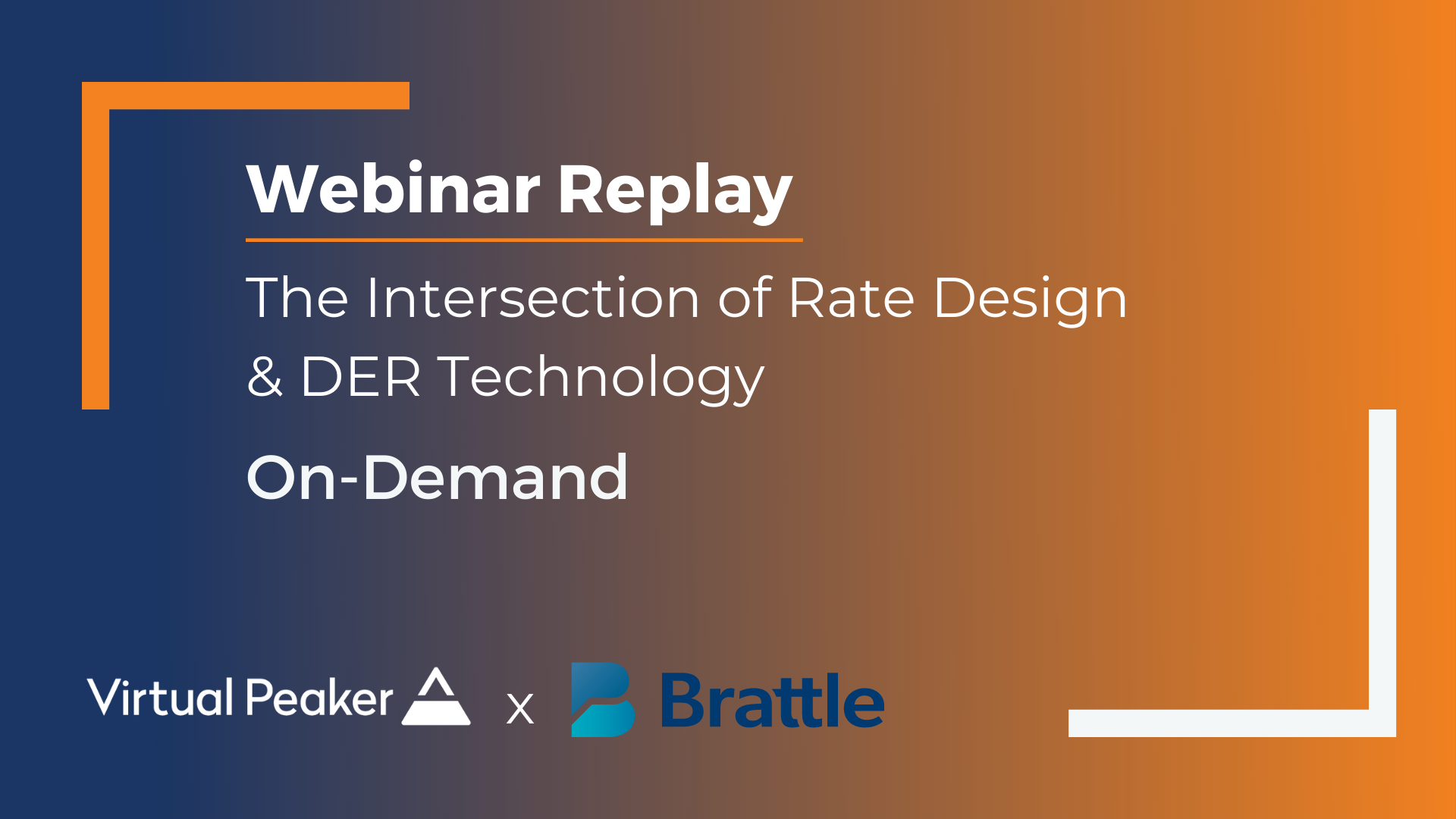3 Reasons Demand Flexibility Programs Should Support Complex Utility Rate Design

Utility rate design has remained relatively consistent over time; utilities generate and distribute power at a fixed, regulated rate. Today, that paradigm is challenged by decarbonization and electrification efforts, increased customer disintermediation through the adoption of distributed energy resource (DER) technologies like solar, battery, EVs and their charging needs, and more; and through extreme weather events challenging grid reliability. Rate increases are most often caused by supply and demand issues, although at times utility rate design is driven by a need to fund new or maintain existing infrastructure. A recent report revealed that U.S. utility rates are driven by a lag between the wholesale power costs and how those costs filter down to customers. Fortunately, good rate design fosters customer engagement in demand flexibility programs, increases customer satisfaction, and improves grid reliability while defraying high energy costs.
Examples of Utility Rate Design
Coupled with economic concerns, utility rate design has fostered public discourse on energy costs, reliability, and the role of the modern electric utility. For example, New York utilities were challenged to potentially issue financial refunds to customers during prolonged outages. More recently, income-based electric bills have become part of the regulatory debate, reigniting interest. More common examples include time-of-use (ToU) rates, a rate structure that complements demand flexibility initiatives through behavioral conditioning.
Utility Rate Design, Regulation, & Net Metering
In 2019, NorthWestern Energy (NYSE: NWE) lobbied the State of Montana’s Public Service Commission to approve a proposed new three-part rate that was ultimately rejected on the basis that there were not at the time enough solar prosumers in the area to justify this proposal. Their new utility rate design would have consisted of an increased monthly service charge, an energy charge, and a demand charge of $8.63/kW that would only apply to new solar Net Metering (NEM) customers. This plan would have meant that new NEM customers would be forced to pay additional demand charges that would further increase their solar payback period, as opposed to the granular bill structures that customers already received. The rejected structure for both NEM and non-NEM customers is demonstrated below.

While the new rate proved controversial, this move by Northwestern Energy is part of a growing trend. In January 2018, Massachusetts regulators agreed to approve Eversource’s three-part utility rate design that included a mandatory demand charge for residential customers who owned distributed energy resources. In September 2018, Kansas regulators approved a new demand fee ($9 per kilowatt in summer and $3 per kilowatt at other times of the year) that only applied to solar customers of the state’s largest electric utility, Westar Energy. Xcel Energy in Colorado and ConEdison in New York are also piloting demand charges, joining several utilities across the country that have begun to adopt these charges as part of their tariff modernization activities.
Since 2019, renewable energy technologies have remained a part of regulatory and legislative discourse. In California, regulatory and legislative mandates have decreased the value of solar, despite evidence that increased distributed energy resource (DER) adoption including solar and battery technologies, will decrease outages statewide. Still, decision-makers around the U.S. are actively working to mitigate these decisions, both through vetoing bills that might curtail the proliferation of green energy technologies, or through legislation like national EV manufacturing mandates, the Inflation Reduction Act, and the Bipartisan Infrastructure Law, all designed to encourage and incentivize decarbonization and electrification efforts.
With the increased penetration of DER adoptions, high peak energy costs, and uncertainty over grid reliability, developing utility rate designs to meet these challenges has never been more important. New, more complex rates increase the onus on the average utility customer to understand the rate while adjusting daily behavior to minimize their monthly utility bill. Utilities must address this head-on by complementing new rates with more robust customer offerings – like real-time demand-side management, customer-led automation, and constant rate improvement/iteration – to be successful. To learn more, read on.
1: Real-Time Demand Side Management
The residential demand charge that NorthWestern Energy proposed was a “non-coincident” peak demand charge. This type of demand charge implies that the residential customer will pay the demand charge whenever it happens – it doesn’t have to coincide with when the grid is experiencing stress.
To adjust their energy use to decrease these demand charges, residential customers would need to constantly monitor their home energy use, an untenable request for most homeowners. Fortunately, real-time demand flexibility is critical in enhancing grid resiliency and defraying high peak energy costs. Fortunately, through the use of a distributed energy resource management system (DERMS), utility operators can manage and control these otherwise disparate technologies. With forecasting technologies, utilities can plan for the potential of high demand, deploying demand flexibility programs from demand response to time-of-use (ToU) rates.
2: Investments Guided By Customer Needs
New residential demand charges would not only have increased the electricity bill for NEM customers but would have also made it harder for customers to understand where their costs were coming from. For these types of changes, utilities adopting residential demand charges must take a more customer-centric approach to maintain customer satisfaction and loyalty.
Polling data suggests that public interest in renewable energy technologies continues to grow, as more consumers engage in the energy transition. The aforementioned report advises letting customer desires guide investments, and automate and simplify their processes. Utilities can develop their load management and utility rate design strategies while providing basic services and meeting customer needs. Furthermore, these services should include a homeowners app that allows customers to easily monitor their energy use, real-time smart device arbitrage that allows utilities can optimize devices not just on signals like the price but also the behavior of the customer, and/or efficient energy storage and management solutions.
3: Iterative Utility Rate Design
A 2019 McKinsey & Co. article found that as the need for reformed utility rate design grows, utilities will benefit from “using early action, cooperation with regulators, and a customer-centric approach to help transform utilities’ one-rate-for-all model into a rate structure that helps retain customers, create revenue that contributes to the upkeep of the grid and makes customer behavior and utilities’ operations more sustainable.”
These residential demand charges are caught up in the ongoing discussion regarding rate structures. Opposing arguments state that increased costs stemming from these demand charges will significantly decrease the number of newly installed residential solar panels while others argue that the purpose of introducing three-part rates is not to “hurt” the rooftop solar industry, but rather to remove distortions in the price signal and provide customers with an incentive to manage their electricity consumption efficiently. Supporters of the charges believe that residential demand charges can remove an unintended subsidy that is currently being provided to NEM customers by non-NEM customers under the existing flat rates.
Utility Rate Design Customer Programs Conclusion
Finding the right utility rate design that works for all utilities all the time is an impossible task, as evidenced by the situations and expert opinions surrounding the NorthWestern Energy net metering rate case. Because of these challenges and an ever-fluctuating energy market, there is a need for iterative utility rate designs to ensure the continuous establishment of appropriate and sustainable rate structures.
This article was originally published on June 25, 2019, with updates made on December 15, 2023.






